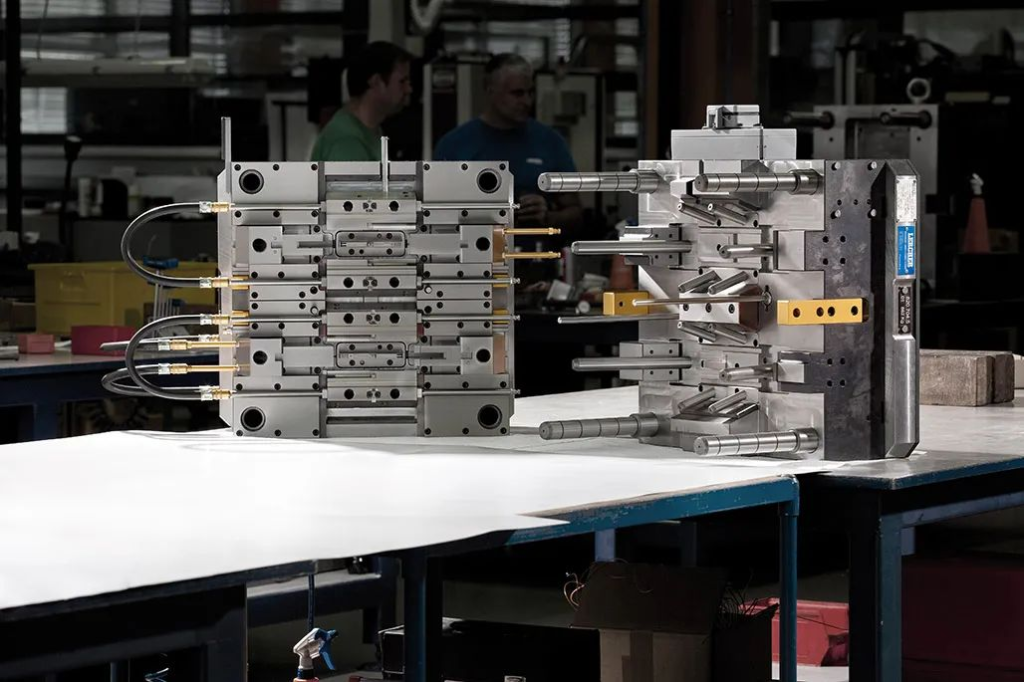01
Main processes of factory mold design
The customer provides product drawings → analyzes the product → confirms the plastic variety → confirms the mold material → converts the engineering drawing → multiplies and shrinks to make a mirror image → complete the assembly drawing → order the mold base → order the mold core material → draft the mold → 3D parting → determine the flow channel / Gate method → refer to the layout diagram for structural design → dismantle the inserts → correct 3D → produce drawings of the project (mold core/inserts/mold base/parts) → make BOM list → proofread and review.
02
Several aspects that should be paid attention to in design
1) When we start mold design, we should pay more attention to considering several options, weigh the advantages and disadvantages of each option, and choose one among them. We should also take the T-mold seriously. Due to time constraints, the design that was considered reasonable at the time would definitely have room for improvement after production and use practice.
2) After handing over the design plan, communicate more with the factory to understand the processing process and manufacturing and use conditions. Each set of molds should have a fixed process of analyzing experience and summarizing gains and losses, so that the level of mold design can be continuously improved.
3) When designing, refer to similar drawings designed in the past and learn from their experiences and lessons.
4) The mold design department should be a whole, and each design member cannot work independently. Especially in the summary of mold design conclusions, there must be a unique style.
03
Mold design basis
The main basis is the product drawings and samples provided to us by customers. Designers must conduct careful and detailed analysis and digestion of products and samples. At the same time, during the design process, all items must be checked one by one.https://solidcomould.com/product/backrest-05/
- Correctness of dimensions related to dimensional accuracy
1) For plastic products with high appearance requirements and low dimensional accuracy requirements, such as toys, etc., except for the transfer of specific dimensions, the other dimensions only need to be in good agreement.
2) Products with strict appearance and size requirements
Is the draft angle reasonable?
Product wall thickness and uniformity.
Plastic types. (Selection of mold steel and determination of shrinkage rate)
surface requirements.
Product color.
In general, color has no direct impact on mold design. When the wall thickness of the product is large and the appearance is large, it is easy to produce uneven color; and the darker the color, the more obvious the defects of the product are exposed.
- Is there any post-processing after the product is formed?
If there are products with surface electroplating and one mold has multiple cavities, it is necessary to consider setting up auxiliary flow channels to connect the products together, and then separate them after the electroplating process is completed.
- Product batch size
The batch size of the product is an important basis for mold design. Customers must provide a range to determine the number of mold cavities, size, mold material selection and lifespan.
- Injection molding machine specifications
- Other requirements from customers
Designers must carefully consider and check to meet compliance requirements.https://doi.org/10.1016/j.measurement.2022.111733
04
General process of mold design
1) Analyze and digest products and samples.
2) You should understand whether the customer has requirements for injection machine specifications to determine the mold size range.
3) Determination and ranking of the number of cavities.
4) The parting surface is determined.
5) If there are row positions and rhombic structures, you should understand them first.
6) Gating system design
7) Determination of mosaic structure.
8) Ejection and reset system design.
9) Cooling and heating system design.
10) Guide and positioning device.
11) Determine the mold base and select standard parts.
12) Selection of mold steel.
13) Complete the structural drawing, mold drawing, and cutting materials.
14) Finally, print out the drawing, check it, and submit it to the mold design team leader and supervisor.
05
Mold trial and mold repair
Although the mold design is carried out under the expected process conditions when selecting molding materials and molding equipment, people’s understanding is often imperfect. Therefore, after the mold processing is completed, a trial mold test must be carried out to see the molded parts. How about the quality. After the discovery is made, the mold will be repaired to eliminate the error.
There are many types of defects in plastic parts, and the reasons are also very complicated. There are reasons for molds and process conditions, and the two are often intertwined. Before repairing the mold, a detailed analysis and study should be conducted based on the actual situation of the adverse phenomena in the plastic parts, and the causes of the defects in the plastic parts should be found out and remedies should be proposed. Because the molding conditions are easy to change, the general approach is to change the molding conditions first. When changing the molding conditions cannot solve the problem, repair the mold is considered.
You should be more cautious when repairing molds, and do not act rashly if you are not very sure. The reason is that once the mold conditions are changed, major modifications and restoration to the original state cannot be made.
06
Organize and archive data
After the mold is tested, if it is not used temporarily, the demoulding residue, dust, oil, etc. should be completely wiped off, coated with butter or other anti-rust oil or anti-rust agent, and sent to a storage location for safekeeping.
